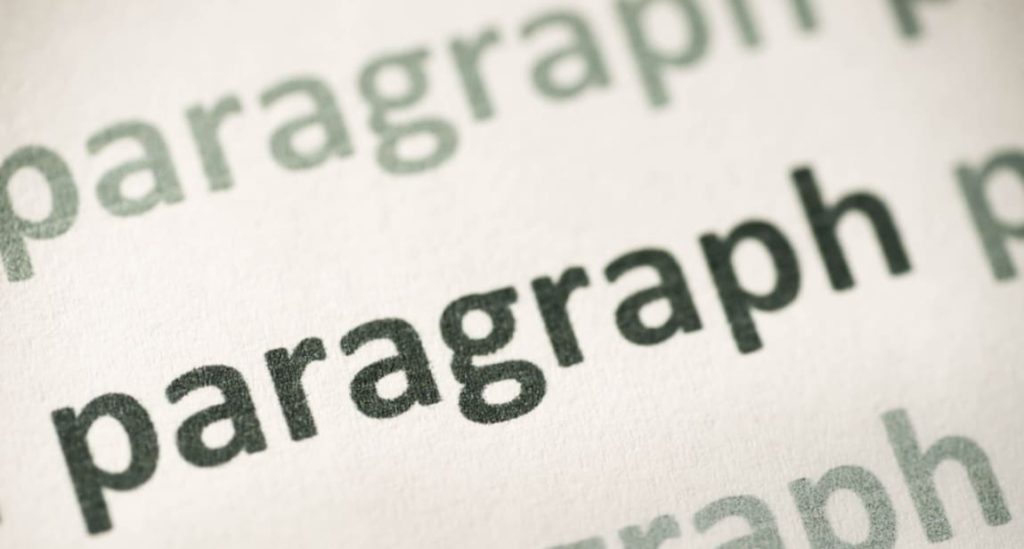A paragraph is intended to speak upon one idea in detail that serves in expanding the topic of the essay or monologue is it a part of.
Being versed at writing English paragraphs comes handy in professions like that of a writer or a journalist. But even so, it also helps you to enhance your point of view no matter what the field or context.
Mugafi Ved – AI screenwriting tool
Well-written paragraphs can enthrall a reader, and make them a part of the world you are creating. If you are wondering what is paragraph writing, you need to read till the end.
How to Structure a Paragraph on Single Topic
Irrespective of length, topic, intent, or narrative, a paragraph traditionally has a skeletal structure to be adhered to. This structure guides you on how to write a paragraph.
Mugafi Ved – professional screenwriting tool
The basic paragraph writing format helps a writer create exposition on one singular detail or thesis and transition on to the next. This format – most helpful in organising your thoughts – consists of:
Topic Sentence
The essence of a paragraph resides in the opening sentence. Known as the ‘Topic Sentence’, this introductory line sheds light on the maid idea of the paragraph. Neither too broad nor too narrow, one shouldn’t make the topic sentence very obvious, but let it be a hint of what is to come.
Supporting Details
These are the follow up information to the key sentence. They build on the idea being sold and help the reader envision it through facts, stats or examples. Supporting details can include writer’s opinion, personal experiences, research studies, analyses and interviews etc.
Concluding Sentence
This is the sentence where you conclude your train of thoughts. It acts as a transition between the present paragraph and the next. It may or may not lead or a new idea altogether but summarises the present information.
Types of Paragraph
For writing a great paragraph, one first needs to know a little about its kinds. Read on to understand the four fundamental types of paragraph styles.
- Descriptive: It is the kind that describes at length the subject within. To write a descriptive paragraph means to include terms that have sensory appeal to the reader. Grammatical standards can take a backseat as you proceed to help the reader visualise with authenticity and artistry.
- Narrative: The sequences of events in a story are made comprehensible in a narrative paragraph. Just as the name suggests, this kind is akin to having your friends narrate a chain of events with a clear start, a middle, and an end.
- Expository: If you are versed at research, this will be a cakewalk. The writer attempts to describe a process or a method in this type. Research can substitute for writer knowledge and/or experience when trying to influence the reader thus.
- Persuasive: This is the kind one uses to build arguments. Teachers use them a lot and try students to either adhere to their perspective or reach their own.
Paragraph Writing Topics
Topics will vary on the basis of the grade in school you are in. It will be again completely different for creative writing assignments, college essays, thesis etc.where each paragraph is crucial to you getting your point across or establishing your forte.
Paragraph Topics in School
A Rainy Day
My Favourite Festival.
A Visit to the Zoo
Paragraph on Noise Pollution
A News Bulletin Paragraph
Paragraph Topics in College
Night before the examination
My ambition in life
Advantages of Hostel Life
Steve Jobs – A Visionary
The Dream of Youth
Paragraph Topics for Creative Writing
People I like
My Strangest Dream
Let me introduce myself
If I Saw an Alien
What if I were 10 years old!
Paragraph Writing Example
A stellar example would perhaps help see the format and style in action.
Mr. Bucket was the only person in the family with a job. He worked in a toothpaste factory, where he sat all day long at a bench and screwed the little caps onto the tops of the tubes of toothpaste after the tubes had been filled. But a toothpaste cap-screwer is never paid very much money, and poor Mr. Bucket, however hard he worked, and however fast he screwed on the caps, was never able to make enough to buy one-half of the things that so large a family needed. There wasn’t even enough money to buy proper food for them all. The only meals they could afford were bread and margarine for breakfast, boiled potatoes and cabbage for lunch, and cabbage soup for supper. Sundays were a bit better. They all looked forward to Sundays because then, although they had exactly the same, everyone was allowed a second helping. – From Charlie and the Chocolate Factory by Roald Dahl
Tips to Write Great English Paragraph Writing
- Knowing when to start.
Paragraph breaks are required when introducing a new speaker starting a new topic, contrasting with other perspectives or to give the reader a pause to reflect. Having control over paragraph breaks makes one a compelling writer.
- Reviewing your paragraph
Typos can be a writer’s bane of existence. Check for poor grammar or choice of words or the occasional spelling mistakes. It pays to not be too overconfident over one’s writing prowess.
- Using transition words
A simple “moreover” does more magic than lines and lines of drab narrative ordeals. Transition words tie separate paragraphs and help build a single, coherent idea. Readers are able to track the story, relate to various elements and experience a smoother reading journey.
In Conclusion
Creative writing can see a lot of the rules being broken and a lot of new styles being created. Concise writing with cohesive ideas that are connected would eventually make a great exemplary paragraph.

